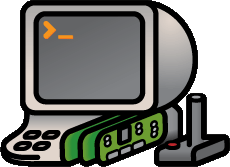|
Platforms have been around for decades, right under our video games and digital art. Those studying new media are now starting to dig down to the level of code to learn more about how computers are used in culture, but there have been few attempts to go deeper, to the metal — to look at the base hardware and software systems that are the foundation of computational expression.
Platform Studies investigates the relationships between the hardware and software design of computing systems and the creative works produced on those systems.
By choosing a platform, new media creators simplify development and delivery in many ways. Their work is supported and constrained by what this platform can do. Sometimes the influence is obvious: A monochrome platform can't display color, a video game console without a keyboard can't accept typed input. But there are more subtle ways that platforms interact with creative production, due to the idioms of programming that a language supports or due to transistor-level decisions made in video and audio hardware. In addition to allowing certain developments and precluding others, platforms also encourage and discourage different sorts of expressive new media work. In drawing raster graphics, the difference between setting up one scan line at a time, having video RAM with support for tiles and sprites, or having a native 3D model can end up being much more important than resolution or color depth.
Particular platform studies may emphasize different technical or cultural aspects and draw on different critical and theoretical approaches, but they will be united in being technically rigorous and in deeply investigating computing systems in their interactions with creativity, expression, and culture. While being addressed to readers without a computer science background, the Platform Studies books will drive deep into the workings of computers, opening an exciting new level for scholars, students, and general readers.
|



